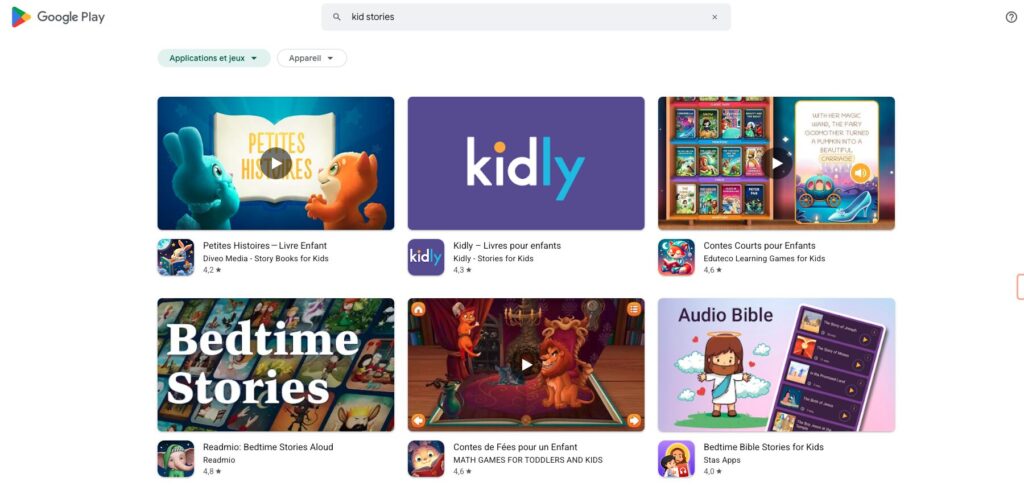As a parent, it’s natural to wonder if your child’s frequent outbursts or intense anger might be more than just typical childhood behavior. Could it be a sign of ADHD? This is a question many parents ask themselves, especially when they see their child struggling with emotional regulation and paying attention.
Emotional regulation is a critical skill for any child, and for those with ADHD, it can be especially challenging. ADHD is a brain-based neurodevelopmental disorder that affects not just attention but also behavior and emotional control. According to experts from Johns Hopkins Medicine, children with ADHD often experience emotions more intensely and for longer periods than their peers. This can lead to difficulties in school, at home, and in social interactions.
It’s important to understand that ADHD-related emotional dysregulation can impact every aspect of your child’s life, from family relationships to academic success. The good news is that with the right strategies and support, your child can learn to manage these challenges. In this guide, we’ll walk you through understanding the signs, seeking a proper diagnosis, and finding effective ways to help your child thrive.
By combining professional insights with a nurturing approach, we’ll explore how to create a supportive environment that fosters emotional growth and resilience. Let’s take this journey together to help your child—and your family—find peace and understanding.
Understanding ADHD in children
ADHD, or Attention-Deficit/Hyperactivity Disorder, is a brain-based condition that affects how your child manages attention, impulse control, and activity levels. It’s important to recognize that ADHD is not just about being easily distracted or hyperactive—it’s a neurodevelopmental disorder that impacts daily life in meaningful ways.
What is ADHD?
ADHD is a condition that affects both attention and behavior. It’s characterized by symptoms like inattention, hyperactivity, and impulsivity. According to Johns Hopkins Medicine, ADHD is often first diagnosed in childhood, with symptoms appearing before the age of 12. While it’s more common in boys, girls can also be diagnosed, though they may exhibit different symptoms.
Types of ADHD
There are three main types of ADHD, each with distinct characteristics:
| Type of ADHD | Key Symptoms |
|---|---|
| Predominately Inattentive | Easily distracted, difficulty staying focused, and struggles with organization. |
| Predominately Hyperactive/Impulsive | Excessive fidgeting, talking, or moving, and difficulty waiting their turn. |
| Combined | A mix of inattentive and hyperactive/impulsive symptoms. |
Understanding these types can help you better support your child. In the next sections, we’ll dive deeper into how to identify these symptoms and address them effectively.
Recognizing the Signs: Behavioral Symptoms and Emotional Outbursts
As a parent, noticing consistent behavioral patterns in your child can be the first step toward understanding their emotional well-being. While all kids experience mood swings, certain signs may indicate more than typical childhood behavior.
Identifying Inattention, Impulsivity, and Hyperactivity
Children may exhibit symptoms like inattention, impulsivity, or hyperactivity. These can manifest as difficulty staying focused, interrupting others, or excessive fidgeting. A helpful way to identify these traits is by observing how they affect daily tasks and interactions.
| Symptom | Common Signs |
|---|---|
| Inattention | Easily distracted, forgetfulness, and struggling to complete tasks. |
| Impulsivity | Acting without thinking, interrupting conversations, and impatience. |
| Hyperactivity | Fidgeting, excessive talking, and an inability to stay still. |
Anger as an Indicator of Emotional Dysregulation
Emotional outbursts, especially anger, can signal difficulties in managing emotions. Research shows that frequent, intense tantrums lasting over 15 minutes may be more than typical behavior. These outbursts can be triggered by frustration or environmental factors, making everyday situations challenging.

It’s important for parents to track these patterns across home, school, and social settings. Early recognition can lead to timely support, improving your child’s self-control and overall development. Collaborating with teachers and healthcare providers ensures a comprehensive approach to addressing these challenges.
Exploring Causes and Risk Factors for ADHD
Understanding the causes of ADHD can help you better support your child. Research shows that both genetics and environment play significant roles.
Genetic factors are a key influence, with ADHD often running in families. If you or a family member has similar traits, your child might be more at risk. Environmental factors, like prenatal exposure to smoking or early childhood toxins, can also contribute.
It’s important to clarify that ADHD isn’t caused by poor parenting. Scientific studies point to differences in brain metabolism and dopamine levels as key factors. Recognizing these causes early can help you seek timely advice and support.
Diagnosis and Expert Evaluation
Understanding whether your child’s behavior is related to ADHD requires a thoughtful and comprehensive approach. As a parent, seeking a proper diagnosis is the first step toward helping your child manage their symptoms effectively.
Steps for a Comprehensive Assessment
A thorough evaluation involves several key steps to ensure an accurate diagnosis. Here’s what you need to know:
- Initial Checklists: Pediatricians often start with standardized behavior rating scales, such as the Vanderbilt Assessment Scale, to gather information from both parents and teachers.
- Observational Assessments: Healthcare providers observe your child’s behavior patterns across different settings, including home and school.
- Specialized Evaluations: Child psychologists may conduct detailed tests to assess attention, impulse control, and hyperactivity levels.
Collaborating with Healthcare Providers
Diagnosing ADHD is a team effort. Here’s how professionals work together:
- Pediatricians: They conduct initial screenings and medical exams to rule out other conditions like vision or hearing problems.
- Child Psychologists: They perform in-depth behavioral assessments and cognitive tests.
- School Staff: Teachers provide valuable insights into your child’s behavior and attention span in a classroom setting.
It’s important to prepare for evaluation appointments. Write down your questions and concerns beforehand. This ensures you cover everything you want to discuss with the healthcare team.
A proper diagnosis is the foundation for effective treatment. Early and accurate diagnosis can make a significant difference in your child’s long-term outcomes, helping them manage symptoms and thrive.
Effective Treatment Options and Parental Strategies
As a parent, finding the right treatment plan for your child can feel overwhelming, but with the right approach, you can help them thrive. Treatment for ADHD often involves a combination of medication and behavioral therapy, tailored to your child’s unique needs.
Medication and Behavioral Therapy Options
Medication is a common treatment for ADHD, and it works by balancing brain chemicals to improve attention and reduce hyperactivity. There are two main types of ADHD medications: stimulant and non-stimulant. Stimulant medications, like amphetamines (e.g., Adderall XR) and methylphenidates (e.g., Concerta), are the most prescribed. Non-stimulant options, such as atomoxetine (Strattera), are also effective and can be a good choice for children who don’t respond well to stimulants.
Behavioral therapy is another key component of ADHD treatment. It teaches your child skills to manage their behavior and emotions. Techniques like positive reinforcement can encourage good behavior and reduce impulsivity. According to the American Academy of Pediatrics, combining medication with behavioral therapy often yields the best results, especially for children over six years old.
| Treatment Type | Details |
|---|---|
| Medication | Includes stimulant and non-stimulant options to balance brain chemicals and improve focus. |
| Behavioral Therapy | Teaches skills to manage behavior and emotions, often using positive reinforcement. |
Parent and Teacher Training for Consistent Support
Consistency is key when supporting a child with ADHD. Parent and teacher training programs can provide you with the tools to create a structured and supportive environment. These programs teach strategies to manage behavior, improve focus, and encourage positive interactions.
Collaboration between parents, teachers, and healthcare providers is essential. By working together, you can ensure your child receives consistent support at home and in school. This teamwork helps your child develop the skills they need to succeed academically and socially.

Remember, every child’s journey with ADHD is unique. With the right treatment plan and a supportive team, your child can learn to manage their symptoms and thrive. You’re not alone in this journey—there are many resources and strategies available to help you and your child succeed.
Supporting Your Child at Home and in School
Creating a structured environment is key to helping your child thrive. A predictable routine can make a world of difference for kids with ADHD, reducing frustration and building confidence.
Creating a Structured Environment for Success
Start by establishing a daily routine that includes clear expectations and minimal distractions. Designate specific areas for homework and relaxation, ensuring they are quiet and free from clutter.
Open communication between parents and teachers is vital. Use daily communication books to track behavior and progress, ensuring consistency across settings. Setting realistic goals and using positive reinforcement can encourage good behavior and reduce impulsivity.
By maintaining a structured setting, you help your child manage symptoms more effectively, fostering a sense of security and self-assurance.
Holistic Approaches to Emotional Regulation
As a parent, you want the best for your child, and sometimes that means looking beyond traditional methods. Holistic approaches can offer a natural way to support your child’s emotional well-being and help them thrive.
Integrating Diet, Exercise, and Mindfulness Techniques
Nutrition plays a vital role in emotional health. A balanced diet rich in protein, omega-3 fatty acids, and essential minerals can help improve focus and mood. Avoiding processed foods and artificial additives can also make a positive difference.
Regular physical activity is another powerful tool. Outdoor activities, yoga, or even dancing can help your child release energy and improve their mood. Mindfulness practices, such as deep breathing or meditation, can teach your child to stay calm and focused.
| Approach | Benefits |
|---|---|
| Healthy Diet | Improves focus, reduces hyperactivity, supports emotional balance. |
| Regular Exercise | Enhances mood, reduces stress, improves sleep quality. |
| Mindfulness Practices | Teaches self-regulation, reduces anxiety, improves attention. |
By combining these holistic methods with traditional treatments, you can create a comprehensive support system for your child. These approaches not only help manage symptoms but also promote overall well-being and resilience.
Conclusion
As a parent, understanding your child’s behavior and emotional well-being is a journey that requires patience, love, and knowledge. ADHD, a neurodevelopmental disorder, can present unique challenges, but with the right strategies, your child can thrive. Early recognition of symptoms like inattention, impulsivity, and hyperactivity is crucial for timely intervention.
A proper diagnosis and a tailored treatment plan, which may include medication and behavioral therapy, can transform your child’s daily life. Collaborative efforts between you, teachers, and healthcare providers create a supportive network that fosters growth and resilience.
Embracing both conventional and holistic approaches—such as a balanced diet, regular exercise, and mindfulness—can provide a well-rounded support system. These methods not only manage symptoms but also promote overall well-being.
Remember, effective management and consistent support can lead to a happier, healthier childhood. You’re not alone on this journey. Feel free to revisit key points, ask questions, or share your experiences. Together, we can help your child shine.
FAQ
How can I tell if my child’s anger is related to ADHD?
Anger in children with ADHD often stems from frustration with their challenges, like trouble focusing or impulsivity. If your child’s anger seems intense or frequent, it might be linked to ADHD symptoms. Consulting a healthcare provider can help clarify this connection.
What are the main types of ADHD?
ADHD is primarily categorized into three types: Inattentive, Hyperactive, and Combined. Inattentive involves difficulty sustaining focus, Hyperactive includes excessive activity, and Combined is a mix of both.
How do I get my child diagnosed?
Start with a visit to your pediatrician. They may refer you to a specialist who will assess your child’s behavior, symptoms, and history to determine if ADHD is present. Early diagnosis is key for timely support.
What treatment options are available for ADHD?
Treatment often involves a combination of medication and behavioral therapy. Therapy can help your child manage symptoms, while medication may be prescribed to improve focus and reduce impulsivity.
How can I support my child at home?
Creating a structured routine with clear expectations can provide stability. Positive reinforcement for good behavior and breaking tasks into smaller steps can also be beneficial. Consistency is key in helping your child thrive.
What role do teachers play in my child’s support?
Teachers can offer accommodations like extra time for assignments or a quiet workspace. Collaborating with them through regular updates and strategies can create a cohesive support system for your child.
Are there alternative therapies that can help?
Yes, alternatives like cognitive-behavioral therapy (CBT) and lifestyle changes such as diet adjustments and regular exercise can complement traditional treatments. Mindfulness practices may also help with emotional regulation.
How can I help my child manage emotions?
Teaching emotional awareness and providing coping strategies can be effective. Encourage open conversations about feelings and offer positive reinforcement when they handle emotions well. Consistency and patience are crucial.
What should I do if I suspect my child has ADHD?
If you notice persistent symptoms like inattention or hyperactivity, schedule a consultation with a healthcare provider. Early intervention can make a significant difference in your child’s development and well-being.




